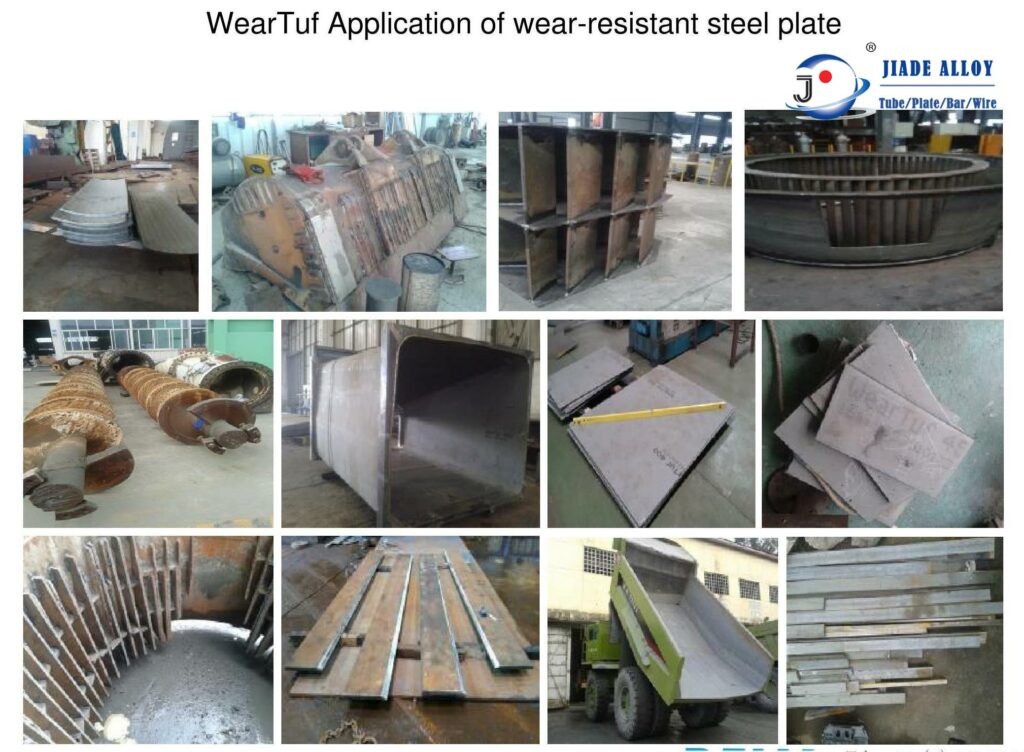
The automotive industry often uses high-strength wear plates to make automobiles achieve the purpose of reducing quality and improving safety. However, it will also cause a series of problems such as cracking and welding instability. Therefore, when using wear plates, wear plates with different functions should be used according to the different structures used.
According to the international research on ultra-light steel vehicles, the steel plate with yield strength in the range of 210-550n/mm2 is called high-strength steel plate, and the steel plate with yield strength greater than 550n/mm2 is called ultra-high-strength steel plate. According to the different strengthening mechanisms, the high-strength steel plate is divided into ordinary high-strength steel plate and advanced high-strength steel plate.
Among them, ordinary high-strength steel plates mainly include high-strength IF steel, baking-hardened steel, phosphorus-containing steel, isotropic steel, carbon-manganese steel and high-strength low-alloy steel; Advanced high-strength steel plates mainly include duplex steel, complex steel, phase change induced plastic steel, bainite steel and martensitic steel.
With the improvement of strength, the plasticity of all kinds of steel decreases significantly. Although the plasticity decreases with the increase of strength, the degree of plasticity decrease of various steels is different while increasing the strength due to different strengthening mechanisms. Steel grades strengthened by phase structure have excellent comprehensive characteristics of high strength and plasticity, such as TRIP steel and DP steel. Since the parts of the automobile body are mostly stamped and formed, plasticity is an important performance of cold-rolled automotive steel plate. Therefore, steel grades with comprehensive and excellent properties of strength and plasticity have become the development trend of high-strength steel plates.

Studies have shown that all kinds of high-strength steel plates have different uses due to their inherent characteristics. For example, baking hardened steel plate has the characteristics of soft before stamping, good shape stability and high dent resistance after baking, especially suitable for stamping the outer cover parts of automobiles; Duplex steel and phase change induced plastic steel have the characteristics of high strength, high collision absorption energy and high fatigue resistance, which are suitable for stamping structural parts and safety parts.
The steel used in high-rise buildings is complex, requiring high safety and reliability, long service life, and the ability to resist the damage of a certain seismic intensity, which determines that the steel plate used in the structure of high-rise buildings requires certain special properties, mainly as follows:
(1) It can resist the damage of a certain seismic force, and it must be earthquake-proof and earthquake-resistant. For this reason, the steel plate must not only have sufficient tensile strength and yield strength but also have a low yield ratio. The low yield ratio can make the material have good cold deformation ability and high plastic deformation work, absorb more seismic energy, and improve the seismic resistance of the building.
(2) It is necessary to have good welding performance, so that there is no need for preheating before welding, and no heat treatment is required after welding, so as to facilitate on-site welding, thereby reducing labor intensity and improving labor efficiency.
(3) It should have high plasticity and toughness so that the steel plate has good mechanical properties.
